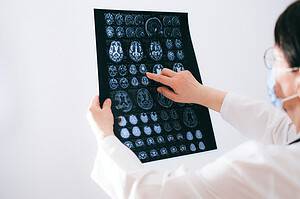Medical negligence and substandard medical care cause severe and often avoidable birth injuries year after year. One of the most common and severe birth injuries that can happen during labor and delivery is cerebral palsy (CP).
CP is a lifelong condition that can lead to problems and indefinite impairments. If your baby developed this condition at birth due to medical negligence, you can file a cerebral palsy lawsuit and fight for justice.
Although many birth complications can result from CP, this post will discuss specifically the types of birth trauma that lead to CP. Read on to learn everything you need to know about cerebral palsy lawsuits.
What Is Cerebral Palsy?
Palsy means “paralysis,” while cerebral means “of the brain.” Cerebral palsy covers numerous conditions related to a person’s lack of control over specific muscles. Tremors, convulsions, and other abnormalities may also be present in CP patients.
Cerebral palsy results from abnormal brain development when the fetus is in utero or from brain trauma during birth.
These injuries might result from infections, genetic diseases, obstetrician negligence, medical errors, or accidents.
Cerebral palsy should not be mistaken for an illness. Instead, it is a condition that develops when the brain is injured either during or soon after birth. These problems can continue to affect future brain development.
How Cerebral Palsy Affects the Victim
Cerebral palsy impacts every person differently. A person’s muscle control, reflex, balance, and body movement may all be affected, depending on the location and severity of the brain trauma.
A person may experience one of these problems, and sometimes they can all happen simultaneously, with varying intensity.

As a disorder, cerebral palsy does not worsen. But with time, the symptoms may get better or worse depending on various causes, therapy, treatment, etc.
Cerebral palsy patients may also have speech, learning, hearing, and vision difficulties. Epilepsy and intellectual disabilities are other conditions that the patients may face.
Cerebral Palsy Statistics
According to the CDC,
- One in every 278 babies is born with or develops some cerebral palsy
- About 764,000 kids and adults have cerebral palsy in the United States
- Approximately 8,000 kids are diagnosed with CP in the U.S every year.
- Seizures affect 30% of children with cerebral palsy.
- The average cost of caring for a CP patient throughout their lifetime is $6 million.
What are the Symptoms of Cerebral Palsy?
The Mayo Clinic states that people with cerebral palsy will have different signs and symptoms. CP muscle and coordination symptoms include:
- Stiff or weak muscles
- Exaggerated muscle reflexes (spasticity)
- Impaired muscle coordination (ataxia)
- Involuntary movements or motions
- Writhing, slow motions (athetosis)
- Delayed motor skills development, such as inability to use their arms to push themselves up, sit up by themselves, crawl, or walk.
- Difficulty walking (a wide gait, asymmetrical gait, or walking on toes)
Depending on the severity, these muscular problems may also affect one side of the body or one limb.
In addition to affecting muscle growth and control, the brain injury that produced Cerebral Palsy may also be a factor in other neurological problems.
People with Cerebral palsy might also have the following:
- Vision, hearing, and speech problems
- Learning and intellectual disabilities
- Autism spectrum disorder
- Attention deficit hyperactivity disorder
- Chronic pain or discomfort
- Seizures
- Urinary incontinence
- Abnormal touch or pain perceptions
What Are the Different Types of Cerebral Palsy?
According to the CDC, two to four in every 1,000 births in the U.S and Europe result in cerebral palsy. Cerebral palsy cases, however, take different forms.
The four types of cerebral palsy are spastic, athetoid/dyskinetic, and ataxic, and some are a combination of the three.
Spastic CP is the most prevalent kind of cerebral palsy, making up roughly 70% of all cases. Spastic CP results from damage to the brain’s motor cortex and is frequently characterized by rigid, jerky movements.
About 10% of instances with CP are athetoid/dyskinetic. This kind is brought on by damage to the basal ganglia, regions of the brain that regulate balance and coordination. Athetoid/dyskinetic CP is frequently characterized by spontaneous tremors.

Another 10% of individuals have ataxic cerebral palsy. Ataxic CP is associated with a lack of balance and coordination. The condition results from injury to the cerebellum, the part of the brain that attaches to the spine.
The other 10% of CP cases are a combination of the first three types. Generally, a person is said to have mixed CP if they display symptoms from more than one of the other three kinds.
Cerebral palsy can also be diagnosed based on the location of the paralysis. These locations include:
- Monoplegia- Paralysis on one limb
- Paraplegia- Paralysis on two limbs, often the legs
- Hemiplegia- Body paralysis on one side
- Quadriplegia- Complete body paralysis, frequently including facial paralysis.
Causes of Cerebral Palsy Due to Birth Injury
You’re possibly wondering whether CP can be diagnosed at birth. What birth-related issues cause cerebral palsy? Can cerebral palsy result from a brain injury?
Here are the causes of cerebral palsy.
Asphyxiation During Delivery
Theoretically, asphyxiation means that the brain is not getting enough oxygen. Birth asphyxia happens when a newborn doesn’t get enough oxygen in utero, during delivery, or right after birth.
When there is a lack of oxygen, waste products accumulate in the brain cells and destroy the tissue, resulting in brain damage. This damage might be either temporary or lifelong, like in the case of cerebral palsy.

Asphyxiation can occur during delivery due to medical malpractice or negligence if the doctors fail to act with a reasonable amount of care.
Asphyxia is considered medical malpractice if it results in brain damage before or after delivery and the physicians were involved in some way.
For instance, the placenta detaching too early, the uterus rupturing during birth, or the umbilical cord being constricted can all result in birth asphyxiation.
These factors may deprive the newborn of oxygen, leading to cerebral palsy.
Intracranial Bleeding
Trauma to the baby’s head after birth can occasionally cause intracranial hemorrhages, often known as brain bleeding. These hemorrhages can be minor or severe, the latter of which can cause death, lifelong brain damage, or Cerebral Palsy.
A poorly managed birth or a failure to diagnose and address another condition, such as macrosomia, abnormal presentation, or blood disorders, can also cause intracranial bleeding, leading to CP.
Physicians are responsible for closely monitoring the mother and child to watch out for fetal distress and other potentially threatening issues.
In the above scenarios, a doctor can use delivery instruments or perform a C-section to reduce the risk of intracranial hemorrhage and cerebral palsy.
The Misuse of Delivery Instruments
Doctors use instruments during difficult births to help them deliver the baby successfully. Forceps and vacuum extractors are the most popular. But if misused, these instruments can cause brain damage, leading to cerebral palsy.

Brain hemorrhage, cerebral contusions, rupture of blood vessels and brain tissue, compression of the brain, reduced blood supply to the brain, and skull fractures are some of the brain injuries brought on by improper use of these tools.
Fetal or Maternal Infections
Pregnant women and fetuses risk infections during pregnancy, labor, and delivery. If not promptly identified and treated, most of these infections can be transmitted to the unborn child and result in life-long problems, such as Cerebral Palsy.
The first few weeks after conception are when prenatal infections pose the greatest risk to the developing fetus. When a woman contracts a disease, her immune system may typically respond to fight it off.
Unfortunately, this immune system response may also lead to inflammation in the fetus’s developing brain, which might impede normal growth. Some common infections include:
- Group B Streptococcus
- Chorioamnionitis
- Cytomegalovirus (CMV)
- Rubella
- Meningitis (dangerous to babies after they’re born)
How Is Cerebral Palsy Diagnosed?
Diagnosing cerebral palsy in a child is challenging due to a child’s lack of muscle and motor skills development, which are used as benchmarks to identify CP.
Generally, CP diagnosis is done when the child is roughly 18 months old because symptoms start to show up more clearly around that age.
Parents start considering cerebral palsy when they notice their kids are not achieving developmental milestones like crawling, rolling over, or walking.
At this point, a parent should obtain a thorough evaluation and diagnosis so their child can start the proper care and therapy.
Observational Diagnosis of CP
When a kid is thought to have cerebral palsy, their primary care physician will frequently monitor them during regular visits.
Doctors use this gradual observation because diagnosing CP in an infant straight away is impossible. The process has to be carefully monitored for several months.
Observational diagnosis entails examining a child’s motor function, such as holding their head still, rolling over, sitting up straight, crawling, walking, and picking up and carrying items.

Medical professionals will also examine a child’s posture, reflexes, and muscular tone to gauge their development level.
Moderate to mild forms of cerebral palsy frequently go misdiagnosed for years because these children often attain typical developmental milestones but only have slight or few limitations.
The diagnosis of severe instances is typically made between 18 months and two years, when the child should have begun to acquire some normal motor abilities.
Imaging Tests to Diagnose CP
The brain may be imaged using imaging tests like MRIs, and CT scans to examine and diagnose seizures and other CP-related disorders.
MRI testing can help identify neurological conditions in children exhibiting CP symptoms. The test might also be used to uncover the cause of cerebral palsy.
CT scans can assist in ruling out other disorders or diseases that can mimic CP. Additionally, they can spot any potential complications, such as brain hemorrhage or skull fractures.
Cranial ultrasounds may provide a quick glimpse at a baby’s brain tissue before conducting additional testing,
An electroencephalogram (EEG) is performed to assess the brain’s electrical activity when a child experiences seizures. Physicians use this test to diagnose cerebral palsy since there is a correlation between epilepsy and CP.
Physicians may also perform other tests to assess other typical CP-related conditions, such as a:
- Hearing test
- Vision test
- Speech test
- Cognitive evaluation
- Blood test
The 5 Levels of Severity in Cerebral Palsy
According to HealthLine.com, cerebral palsy falls into five categories:
- Level 1 – Fully independent; can move freely and perform most physical tasks with minimal balance or coordination difficulties.
- Level 2 – Able to walk for long distances without difficulty but unable to run or jump; may use support aids, such as wheelchairs or arm and leg braces; struggles to balance on uneven surfaces.
- Level 3 – Can stand without assistance and sit with minimal support but must move around using crutches or a wheelchair.
- Level 4:Severe mobility issues but can walk with assistive devices; can move independently in a wheelchair.
- Level 5: Severe involuntary control; needs assistance to sustain head and neck posture; requires support to sit and stand.
What Should You Do if You Think Your Child Has Cerebral Palsy?
How soon can you identify cerebral palsy? If you suspect your baby has CP, educate yourself as much as possible on the symptoms and be vigilant.
Schedule your child for examination with a cerebral palsy specialist as soon as possible, particularly if your child’s primary care physician has previously expressed worry about this condition.
You could be observing early CP symptoms if your baby:
- Fails to reach typical developmental milestones
- Walks in an unusual manner
- Has difficulties with motor skills, sitting up, or speaking

These cases have a statute of limitations, just like any other civil claim. Florida, for example, has a two-year limit for filing medical malpractice claims. That means you have two years from the date of diagnosis to file a cerebral palsy lawsuit.
Diagnosing CP is challenging, but the earlier the diagnosis, the better. The sooner a diagnosis is determined, the sooner treatment may start, increasing your child’s chances of improving.
It will also be easier for you and your family to seek the compensation you deserve before it is too late if you find out on time. Speak to an experienced birth injury lawyer immediately to get started on your case.
Will My Cerebral Palsy Lawsuit Go to Trial?
Most personal injury lawsuits don’t go to trial; instead, they end in a settlement. However, the defense may refuse to concede fault or offer a reasonable settlement.
You may go to trial if the settlement offer is too low. But there are some drawbacks to going to trial.
Usually, it takes longer to get compensation if you go to trial. A trial entails risk since no damages may be awarded if the jury rules against you. The positive side is that a jury award is typically higher than a settlement sum.
Steps in a Cerebral Palsy Lawsuit
After filing your claim, your attorney will look into the occurrence to gather proof of medical malpractice.
You may assist by sharing your medical documents, including prenatal care, your baby’s antenatal care, and birthing.
- Filing a legal lawsuit. Your attorney will file the case and present it to the defendants after compiling all the necessary information. The defendants will have a specific window of time, often 30 days, to reply to the allegation.
- Discovery phase. Discovery begins after getting the defendant’s response to the complaint. Both parties’ lawyers prepare papers, evidence, and depositions during the discovery process to support their respective claims in court. Information can be shared between the parties during this time.
- Negotiation and settlement. Your attorney will attempt to settle your case through negotiation. To negotiate a settlement sum for your family, your attorney will provide the evidence against the offender. The idea is to settle immediately instead of going through a protracted trial.
Defendants in medical malpractice lawsuits typically consent to an out-of-court settlement even when they refuse to accept fault.
A settlement is often less costly considering the chances of the jury awarding larger sums. Your lawyer will deliver the evidence to the jury if your cerebral palsy case proceeds to trial.
The amount of monetary compensation you are entitled to receive will be determined by the board, along with whether the defendants were negligent.
What Could You Recover in a Cerebral Palsy Lawsuit?
You might recover several potential damages with an experienced attorney’s aid. These damages may include the following:
- Reimbursement for medical expenses
- Physical therapy
- Stabilizing braces
- Speech therapy
- Medications
- Wheelchair
- Workplace therapy
In addition, you may be entitled to damages for your pain and suffering due to being unable to finish or engage in activities that formerly gave you satisfaction and lost wages if you failed to report to work.
Recent Notable Cerebral Palsy Lawsuits
In 2017, a federal jury ruled in favor of a family, and they were awarded $14.2 million in their case against Salina Regional Health Center.
Based on the legal documents, Dr. Carnevale and Clearfield hospital inappropriately administered Pitocin to Nicole Welker, the plaintiff, when in labor. As a result, her child was born with cerebral palsy and neurological problems.
The jury agreed that Welker’s family attorney had presented sufficient proof to determine that the defendants were at fault.
On July 2, 2019, according to the Baltimore Sun, Erica Byrom and her child Zubida were granted $229.6 million in what was dubbed “the highest medical malpractice ruling ever awarded in the U.S.”
Byrom visited the Johns Hopkins Bayview Medical Center in Maryland with high blood pressure caused by preeclampsia. Byrom, who was just 16 years old, opted not to have a C-section, and the attending doctor didn’t perform an emergency C-section. Yet, there were indicators that the unborn child was in grave danger.

As a result, Zubida developed cerebral palsy due to oxygen deprivation at delivery and now needs “round-the-clock” care.
The jury determined that the plaintiff’s team had provided sufficient proof of negligence to establish that the hospital played a role in the birth injuries sustained by the child.
In April 2019, a $22.5 million compensation was given to a Wisconsin family after their baby boy suffered cerebral palsy post-surgery at the American Family Children’s Hospital of UW Health.
The legal filings show that the newborn suffered severe brain damage due to oxygen deprivation during surgery. The plaintiffs’ attorneys claimed that Dr. Michael Chalifoux, the surgeon, failed to take the necessary action when the baby’s blood pressure readings were dangerously low.
Get Help Filing a Cerebral Palsy Lawsuit Today
If you suspect your child has a birth injury and believe a doctor is responsible for the harm, you need a reputable cerebral palsy attorney to fight for your rights.
Working with a skilled lawyer to manage your cerebral palsy lawsuit will help you get the resources you need to provide the best care to your child.
At Legal Giant, we can connect you with the best attorney to handle your case. Contact us today for a free, no-obligation consultation.

